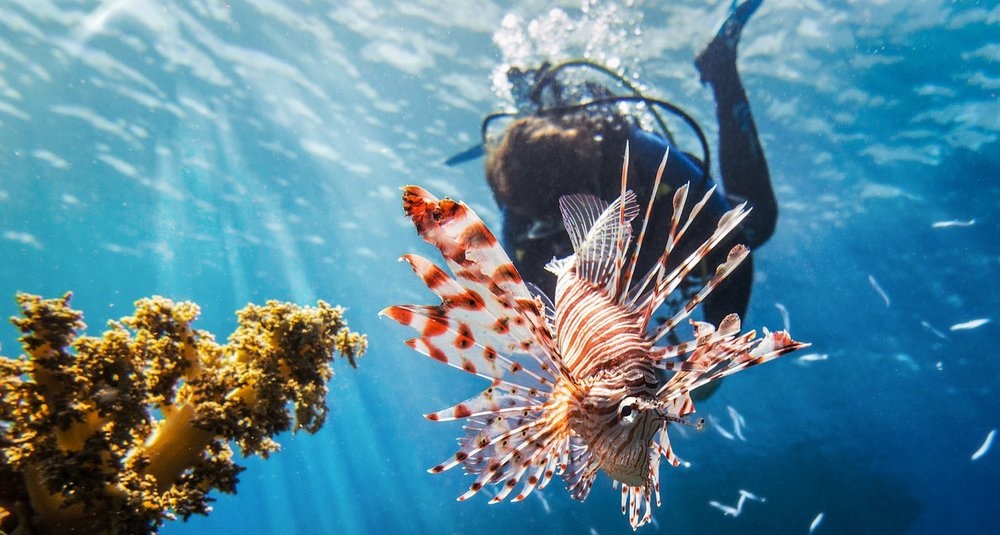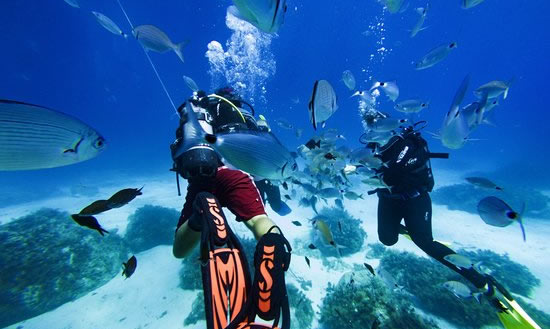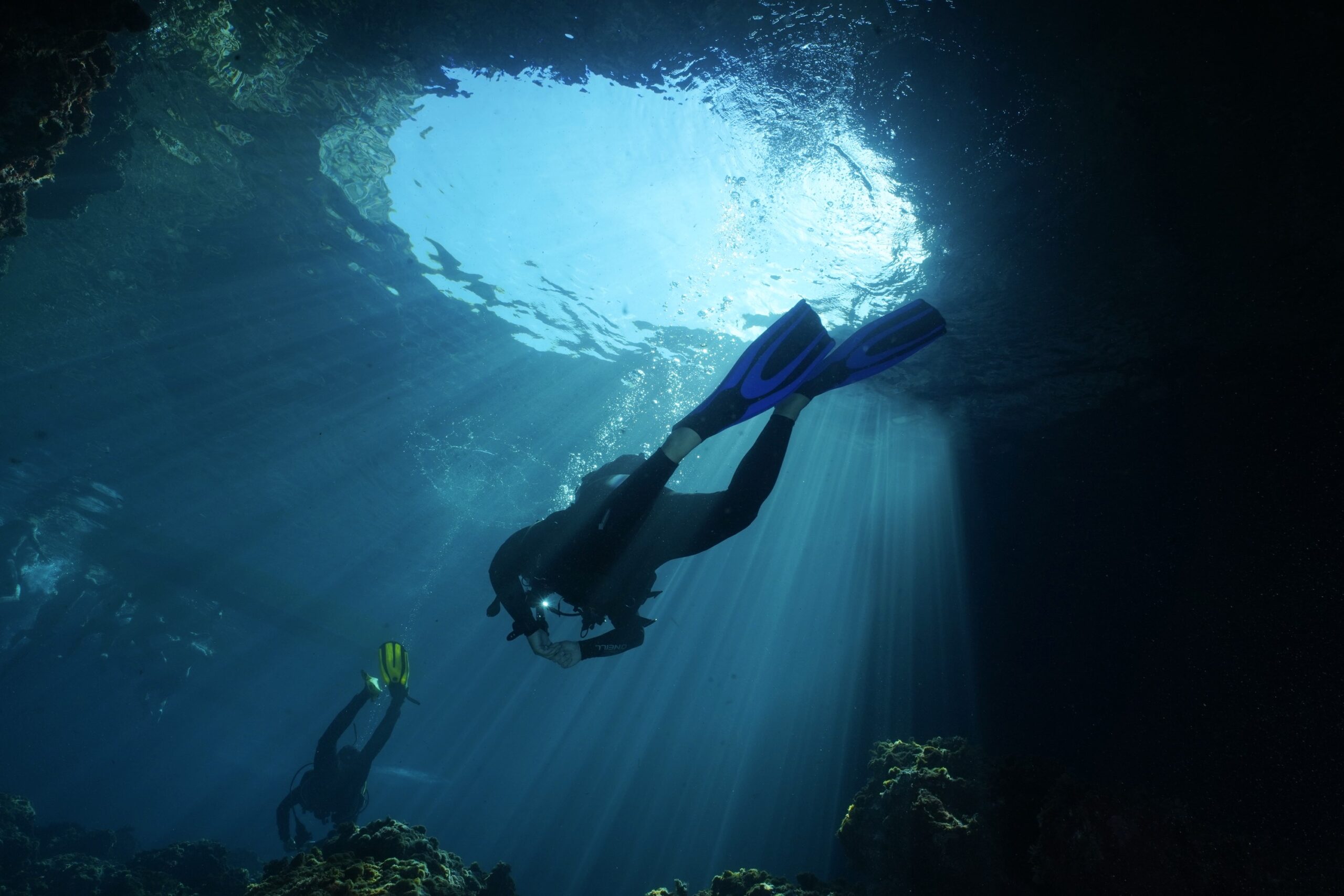Diving
With such a fantastically favourable climate and an astonishing array of underwater sites, it’s easy to see why Malta is consistently voted one of the best diving destinations in the World!



It’s hardly surprising that divers flock to the Maltese Islands from far and wide to explore its crystal clear waters. Offering a wide choice of shore and boat dives at varying depths, there’s something to suit divers of all abilities. With the possibility for anyone over the age of 10 to attain recognized diving qualifications, Malta really is the ideal destination for a family holiday!
Want to experience Malta’s underwater delights without venturing far from shore?
With an endless choice of shore dives easily accessible from land, you certainly can! With a variety of marine landscapes and wreck sites to choose from, and depths ranging from 5 to 60 metres, a plunge in Malta’s crystal clear waters is well worth putting on your flippers for

SS Margit - Kalkara Creek
Built in 1912, the magnificent SS Margit is a Panamanian steam passenger ship lying on the seabed, just to the East of the Grand Harbour. One of Malta’s most fascinating and impressive wrecks, she was sunk in an air raid on April 19th 1941 at Kalkara Creek.

Um El Faroud
The Um El Faroud was sunk in 1998 following a terrible explosion on board that killed nine Maltese dockyard workers. It sits upright on the sandy seabed Southwest of Wied iż-Żurrieq. The Um El Faroud weighs 10,000 tons and is 115 metres long. The depth to get to the top of the bridge is 18 metres, and 25 metres to arrive to the main deck. Divers might even come across some squid and barracuda when they arrive at the stern. The port side is usually teeming with large schools of sea breams, parrotfish, and silversides. You might even come across the occasional amberjack, and tuna. The wreck can be entered fairly easily, but due to its size, this should be restricted only to divers with advanced wreck diving training.

St Paul's Islands
These islands can be found at the western entrance to St. Paul’s Bay, and the only way of reaching them is by boat.
There are various dive sites at St Paul’s Islands, including the location where St. Paul is alleged to have been shipwrecked. Although there are no ship remains to prove this, other objects such as some plates, ribs form an old destroyer, and a small ferry sunk purposely in 1984 can be seen.
Another dive you can do here is an open water reef dive. The seabed is covered in rocks and boulders, and small sea urchins and fireworms can be seen.
Yet another dive is the one at St. Paul’s valley, found between the two islands. The seabed is of white sand and is covered in boulders and Posidonia, where numerous wrasse can be found. Between the seagrass, broad-snouted pipefish can also be seen.

Dragonara Cave
Situated in the north-eastern point of Malta, at the surface you will find a number of caves, inside of which are several tunnels.
The entry is a simple narrow inlet that goes down between 3 to 10 metres. A 10-minute snorkel will get you to two separate options – a reef rich in marine life and an impressive drop-off to the left, and to the right you will find an underwater entrance to a large cave.
All throughout the dive you will see plenty of cardinalfish, bright corals, and red sponges.

Nasturium
A British sloop of war built in 1915, the Nasturtium was built as a small anti-submarine vessel to boost the British Navy’s anti-submarine operations. Alas, her service was cut tragically short, and since that fateful day in 1916, she has remained 67 metres below the surface in what has now become a protected area for marine flora. In addition to exploring the ship’s numerous nooks and crannies, divers can check out the barracudas, johndorys, and other low lying sea life surrounding the wreck as well as the exquisite coral growth now adorning the ship’s metalwork. The HMS Nasturtium was opened to technical divers with a special permit in May 2019 by Heritage Malta. A truly fascinating dive, the HMS Nasturtium is one wreck you certainly won’t forget!

Trusty Star
Built in 1919 by Ouse Shipbuilding for the British Royal Navy now sits at a 45 degree angle on the sandy seabed at a depth of 90 metres. The ship measures 26 metres in length with a width of 5.5 metres. In 1939, the ship’s name was changed from ‘FV Elie Ness’, the name used when the ship was used in the Scottish fisheries, to HMS Trusty Star after being converted into a minesweeper during the second World War. One crew member went missing when the Trusty Star sank whilst the remaining crew survived unscathed. In 2019, the wreck was extended to divers three years after its discovery by Heritage Malta and can only be explored by technical divers with a special permit.
